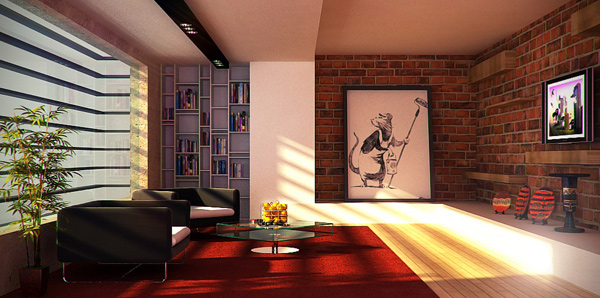

Those are the hues that result from mixing two primary colors together. It can make you feel calm and soothed, which is ideal when creating a peaceful home environment. The only primary color that is considered part of the “cool” family, blue is reminiscent of nature and is thought to promote intelligence, serenity, and loyalty. Blue was the top color choice, and it was also considered the best for studying. Blue In one interior design color psychology study, university students were asked to rate their color preference among six buildings that were all the same except for the hue of their interiors.It has to be the right yellow however, too bright, and it can spark feelings of agitation, and a too-dull yellow may make you feel jealous or ill. Walk into a kitchen or bathroom that has this kind of yellow, and you may get an extra spring in your step from a burst of cheerfulness. Yellow Want to brighten a small, dark, enclosed space? Paint it a sunny yellow, which is often linked to feelings of happiness and optimism it’s like a sunshine substitute in spaces that don’t get a lot of natural light.Because red has such depth, it is often used as an accent color in textiles or furniture, as it may seem overpowering in smaller rooms to have entire walls drenched in red. The right shade of red (which we’ll get to in a moment) can raise your energy levels so that you feel stimulated and invigorated. Red can denote power, sensuality, and vigor. Red This is a fiery, warm color that is definitely for those who favor bold design schemes.These three colors-red, yellow, and blue-are the foundational points of the color wheel. When discussing room color psychology, it can be helpful to start at a point where you probably first learned about colors in school: the primary colors. What does your home say about you? A lot of it has to do with color.

It also impacts people who come into our home-it can be a place of welcome or a place that is cold or chaotic. But it’s important to understand color meaning in interior design because we spend so much time in our homes, and the ambiance we create there has a huge influence on our everyday mood and lifestyle. In those cases, the popular hues of the time were dictated by the mood of the nation. It even plays a role in wide-ranging cultural trends-think of how the dull olives, grays, and neutrals of World War II fashion and design gave way to poppy pastels in the prosperous 1950s, which then evolved into vivid neons in the psychedelic ‘60s. It applies to fine arts such as painting and photography, advertising and branding, fashion, beauty, industrial design, and many other fields. His work was the first to deeply examine the psychological effects of colors and their impact on human emotions.Ĭolor theory isn’t limited to interior design, of course. The science of color made great strides forward thanks to experiments by Isaac Newton in the 17th century, which resulted in the first color wheel, and later by Johann Wolfgang von Goethe, who published the groundbreaking “Theory of Colors” in 1810. In other words, it’s what is commonly known as a rainbow of color. This spectrum runs from shorter wavelengths (blue or purple colors) to longer wavelengths (reds). Color is the manifestation of how our brain and vision perceive different wavelengths of light. Research into color theory has ascribed defined emotions to each hue, and it also takes into account various factors such as tint, saturation, and tone.Ĭolor psychology has been studied for hundreds of years. Hues are carefully chosen in order to invoke a certain emotional response in people and set a particular mood. In interior design, color psychology is the school of thought that focuses on color as a means of creating a specific atmosphere and mood. But you also need to take into account how the colors you use in a room will make you feel. Obviously, you don’t want a design scheme where the colors conflict with each other. Often when we think of color in relation to interior design, we consider how the hues look.


 0 kommentar(er)
0 kommentar(er)
